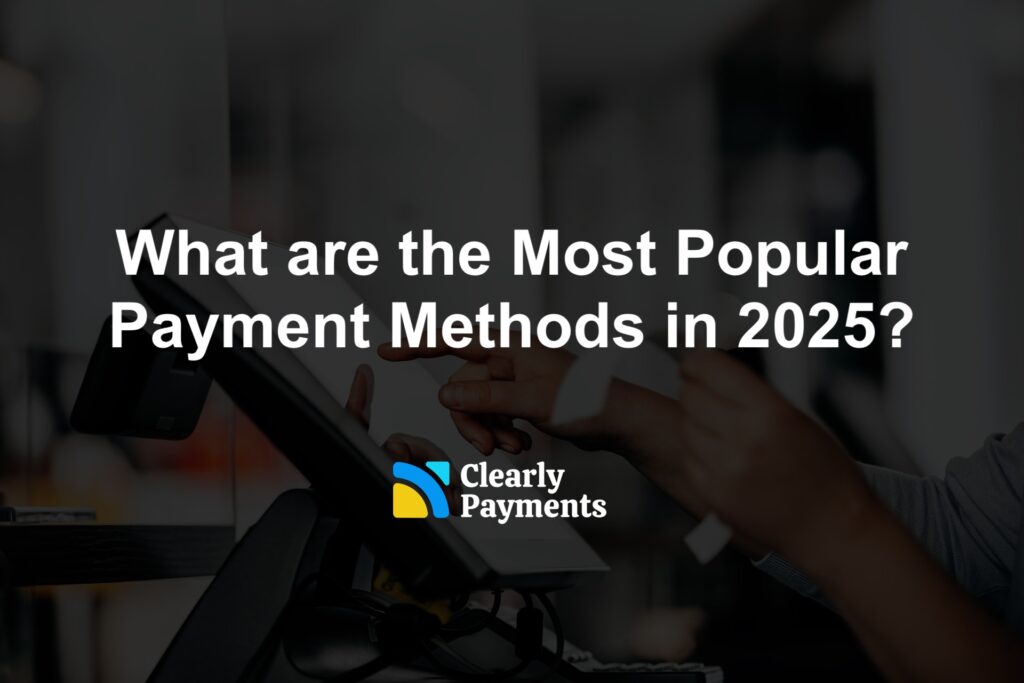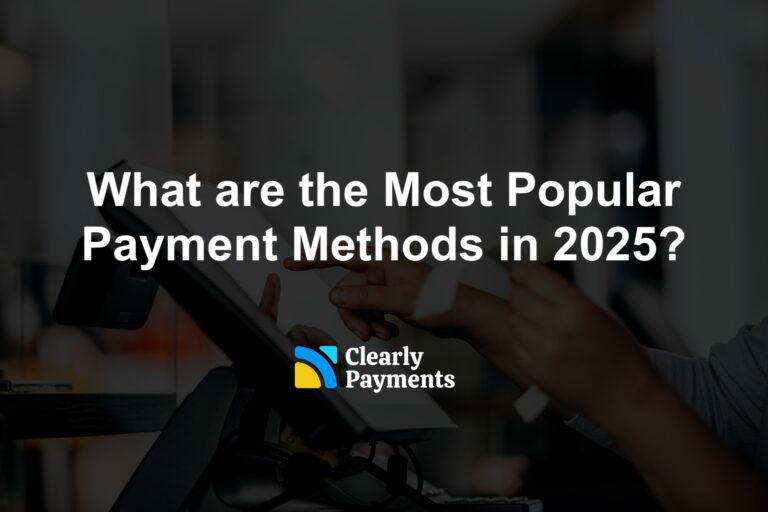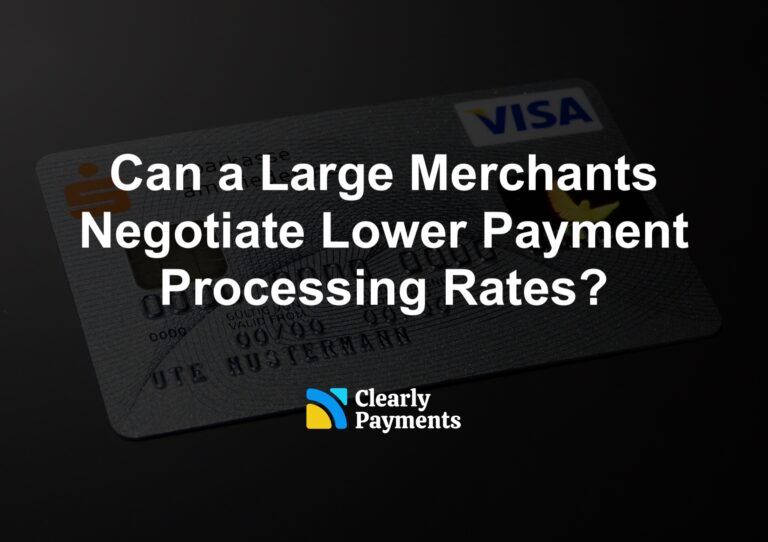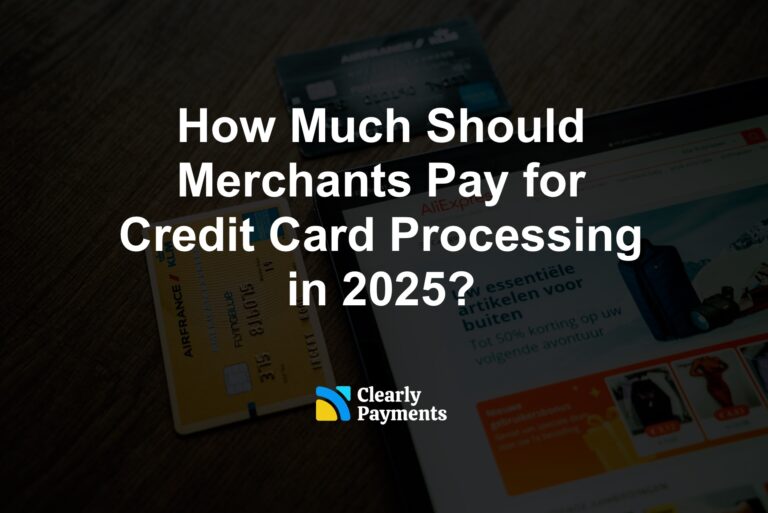The way people pay has been changing fast since the advent of the internet. In 2025, customers expect faster, safer, and more flexible payment options—both online and in person. The different payment methods you accept can impact your sales, reduce costs, and improve the customer experience.
This article breaks down the most popular payment methods in 2025, based on the latest global trends and statistics.
Market Share of Payment Methods in 2025
Knowing the most popular payment methods that customers prefer can help you prioritize which options to offer. Here’s a breakdown of global payment method market share based on recent data:
| Payment Method | Estimated Global Market Share (2025) | Key Regions of Use |
|---|---|---|
| Digital Wallets | ~50% | North America, Europe, Asia |
| Credit & Debit Cards | ~25% | North America, Europe |
| Bank Transfers (ACH, UPI, etc.) | ~15% | Asia (India), USA, EU |
| Buy Now, Pay Later (BNPL) | ~5% | Europe, Australia, North America |
| Cash | ~3% | Rural and developing areas |
| Cryptocurrency | <1% | Niche and international online markets |
| Checks | <1% | Mostly phased out |
In Canada and the United States, credit and debit cards continue to dominate, making up over 65% of total consumer payments in 2025, according to McKinsey research. However, mobile wallet usage has surged—more than 50% of consumers now regularly use Apple Pay, Google Pay, or other digital wallets for in-store and online purchases. Keep in mind, as of 2025, about 90% of mobile wallet transactions in North America (USA and Canada) are funded by credit cards behind the scenes. Buy Now, Pay Later (BNPL) services are also gaining ground, especially among younger shoppers, accounting for around 6% of e-commerce transactions in both countries.
Digital wallets have overtaken cards globally due to convenience and mobile integration.
Bank transfers are seeing major growth, especially with real-time payment systems like UPI (India) and FedNow (USA).
BNPL continues to grow, particularly among younger shoppers making online purchases.
Cash and checks are now rare in most urban markets and are being phased out by large retailers.
For merchant, focus on the top 3–4 payment methods that fit your customer base and location. This helps optimize checkout speed, reduce abandonment, and cut down on transaction fees.
1. Digital Wallets Are the New Normal
Digital wallets like Apple Pay, Google Pay, and PayPal are now the top way people pay—especially online and on mobile.
PayPal holds a 45% global market share for online payments in 2025.
Apple Pay and Google Pay are widely used in both North America and Europe.
As of 2025, about 90% of mobile wallet transactions in North America (USA and Canada) are funded by credit cards behind the scenes.
What it means for you: If your website or checkout doesn’t accept these wallets, you may be missing out on sales—especially from younger and mobile-first customers.
2. Bank-to-Bank Payments Are Booming
Systems that move money directly between bank accounts are growing fast, and they’re often cheaper for businesses.
FedNow launched in the U.S. in 2023 and now supports instant transfers between over 1,000 banks.
eTransfer in Canada remains extremely popular, with over 1 billion transactions annually, especially for small businesses and peer-to-peer payments.
UPI in India processed over $2.8 trillion in 2023, and it’s still growing.
These systems often avoid credit card fees, helping you reduce costs.
What it means for you: If you sell high-ticket items or do a lot of recurring billing, offering direct bank payments could improve margins.
3. QR Code Payments Are Growing Globally
Using a QR code to pay is becoming common, especially in physical stores and among small businesses.
- Canada: While specific statistics for Canada are limited, QR code payments are gaining traction, particularly among small businesses and pop-up shops.
- United States: In the U.S., QR code payment usage has seen significant growth. The number of consumers using QR codes for payments is expected to rise from 83.4 million in 2022 to 99.5 million by 2025. This increase is driven by the demand for cashless payment options and the integration of QR codes in various sectors, including retail and hospitality.
- In Sweden, QR payments through Swish are widely used.
India and other Asian countries also rely heavily on QR-based systems tied to mobile apps.
What it means for you: QR payments are easy to set up and cost less than traditional card terminals. They’re also contactless, which customers prefer.
4. Credit and Debit Cards Still Matter
Cards are still very common, especially in the U.S. and Canada. However, their use is slowly declining in favor of digital wallets (which are still credit cards) and bank transfers.
Many card transactions now go through wallets like Apple Pay.
The fees you pay on card payments are still a concern for many businesses.
What it means for you: Cards aren’t going away, but you may want to explore lower-cost options for certain customer segments.
5. Cash and Checks Are Fading Fast
In 2025, the average American writes just one check per year—down from three in 2016. Major retailers have stopped accepting checks, and cash use continues to decline in urban areas. Cash is quickly falling out of favor.
What it means for you: If you still handle a lot of cash or checks, consider encouraging digital payments to reduce fraud risk and administrative time
6. Cryptocurrency is an Emerging Niche
A small number of businesses accept crypto like Bitcoin or stablecoins, mostly in tech, luxury, or international markets.
These payments are often converted immediately into dollars or local currency using a payment gateway.
Volatility is still a concern, but the option may appeal to a small but loyal customer base.
What it means for you: Not essential for most businesses—yet. But offering crypto can show innovation and attract certain niche audiences.
Costs and Fees for Different Payment Methods
Offering a variety of payment options can help businesses increase sales, but it’s important to understand the costs involved. Each payment method comes with its own set of fees, which can significantly affect your profit margins over time.
Here’s a comparison of typical fees associated with popular payment methods in 2025:
| Payment Method | Typical Fees | Notes |
|---|---|---|
| Credit & Debit Cards | 1.5% – 3.5% per transaction | Widely used; fees vary by card network and transaction type |
| Digital Wallets (Apple Pay, Google Pay, PayPal) | 2% – 3% (plus extras) | Convenient; fees similar to credit cards; extra for cross-border |
| Bank Transfers (ACH, FedNow, UPI) | $0.20 – $1.50 per transaction | Low-cost; ideal for large or recurring payments |
| Buy Now, Pay Later (BNPL) | 4% – 6% per transaction | Higher fees; can increase average order values |
| Cash and Checks | Hidden costs (up to 10%) | Handling, deposit, and security risks add hidden expenses |
| Cryptocurrency | ~1% processor fee | Low fees, but subject to price volatility risks |
Key Takeaways
-
Credit cards and wallets are easy for customers but come with moderate to high fees.
-
Bank transfers are one of the most affordable options, especially for larger payments.
-
BNPL services can drive more sales but at a higher transaction cost.
-
Cash and checks are becoming less practical due to hidden handling and security costs.
-
Cryptocurrency offers low fees but can be risky if not instantly converted to cash.
Businesses should balance customer preference with fee management to maximize profitability in 2025.




